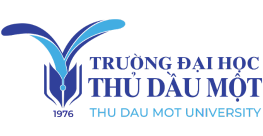Comparing the potential of three dracaena species to remove lead (pb) from artificial aqueous media
Abstract
The study was undertaken to compare the lead accumulation and removal of Dracaena sanderiana, Dracaena reflexa, and Dracaena deremensis on artificial lead solutions to apply plants in lead pollution treatment. The experiment consisted of 6 treatments corresponding to 3 investigated species of Dracaena. Each treatment was grown on 2 types of solution with Pb and without Pb used as control. The results indicated that the growth of D. sanderiana, D. reflexa, and D. deremensis was not affected at Pb concentrations of 100 ppm. All three plant species had the ability to absorb and accumulate Pb. In which D. sanderiana was a typical lead excluder because the lead concentration in roots (1952.14 mg/kg), shoots (221.78 mg/kg), and leaves (166.46 mg/kg) of the plants were the highest among the three plants tested. The most of lead accumulated in the root, and transportation of lead in D. sanderiana, D. reflexa, and D. deremensis from root to shoot was restricted. Besides, the highest % removal of Pb was found at D. sanderiana (93.16%) and the minimum of 66.77% at D. reflexa. D. sanderiana is the best choice among the three Dracaena species used for phytoremediation of lead contaminated wastewater.
Full text
View PDFPublication Information
Publisher
Thu Dau Mot University, Viet Nam
Honorary Editor-in-Chief and Chairman of the Editorial Board

Assoc. Prof. Nguyen Van Hiep
Deputy Editor-in-Chief

PhD. Trần Hạnh Minh Phương
Thu Dau Mot University
Thu Dau Mot University
Editorial Board

Prof. Tran Van Doan
Fujen University, Taiwan
Fujen University, Taiwan

Prof. Zafar Uddin Ahmed
Vietnam National University Ho Chi Minh City
Vietnam National University Ho Chi Minh City

Prof.Dr. Phillip G.Cerny
The University of Manchester, United Kingdom
The University of Manchester, United Kingdom

Prof. Ngo Van Le
University of Social Sciences and Humanities (VNU-HCM)
University of Social Sciences and Humanities (VNU-HCM)

Prof. Bui The Cuong
Southern Institute of Social Sciences
Southern Institute of Social Sciences

Prof. Le Quang Tri
Can Tho University
Can Tho University

Assoc. Prof. Nguyen Van Duc
Animal Husbandry Association of Vietnam
Animal Husbandry Association of Vietnam

Assoc. Prof. Ted Yuchung Liu
National Pingtung University, Taiwan
National Pingtung University, Taiwan

PhD. Anita Doraisami
Economics Monash University, Australia
Economics Monash University, Australia

Prof. Dr. Andrew Seddon
Asia Pacific University of Technology & innovation (APU)
Asia Pacific University of Technology & innovation (APU)

Assoc. Prof. Le Tuan Anh
Thu Dau Mot University
Thu Dau Mot University

Prof. Abtar Darshan Singh
Asia Pacific University, Malaysia
Asia Pacific University, Malaysia

Prof.Dr. Ron W.Edwards
The University of Melbourne, Australia
The University of Melbourne, Australia

Assoc. Prof. Hoang Xuan Nien
Thu Dau Mot University
Thu Dau Mot University

PhD. Nguyen Duc Nghia
Vietnam National University Ho Chi Minh City
Vietnam National University Ho Chi Minh City

PhD. Bao Dat
Monash University (Australia)
Monash University (Australia)

PhD. Raqib Chowdhury
Monash University (Australia)
Monash University (Australia)

PhD. Nguyen Hoang Tuan
Thu Dau Mot University
Thu Dau Mot University

PhD. Nguyen Thi Lien Thuong
Thu Dau Mot University
Thu Dau Mot University
Assistant

Nguyen Thi Man
Thu Dau Mot University
Thu Dau Mot University

